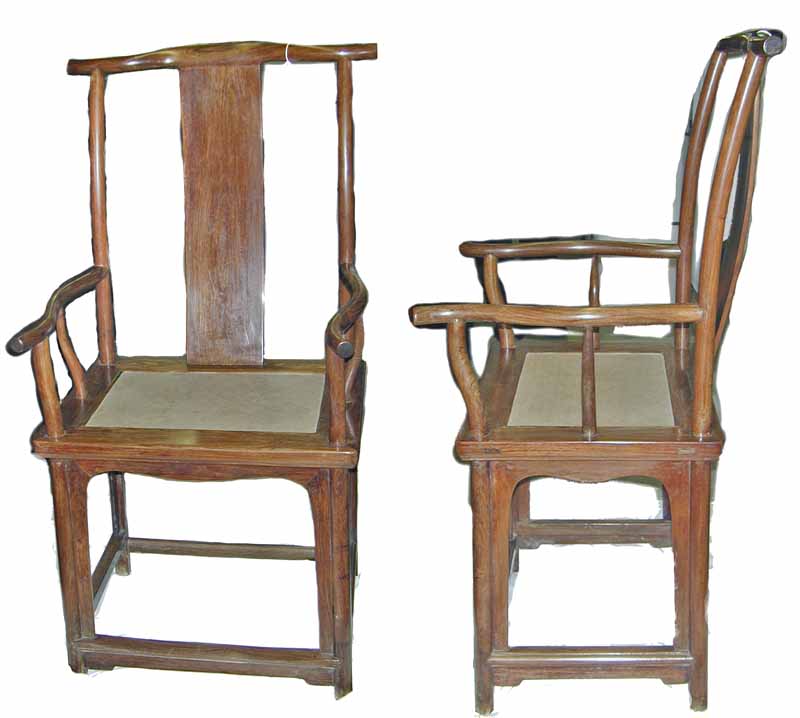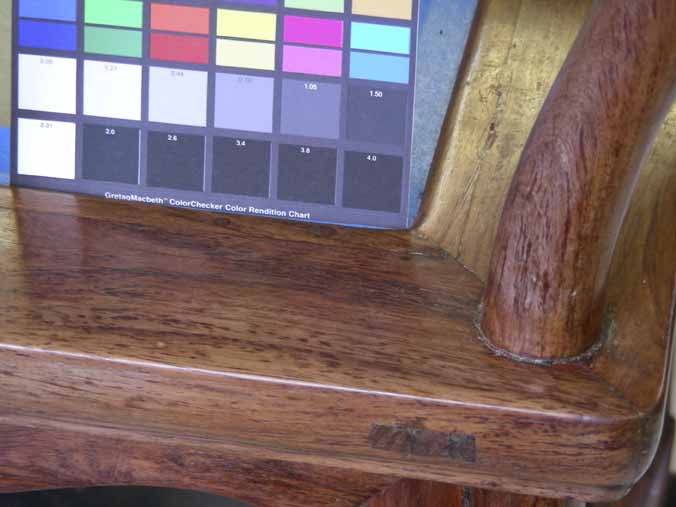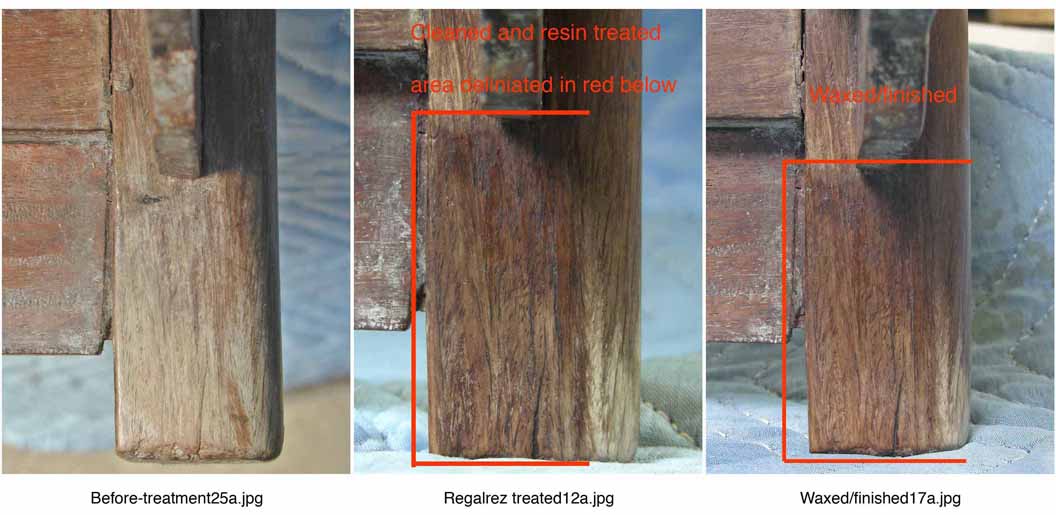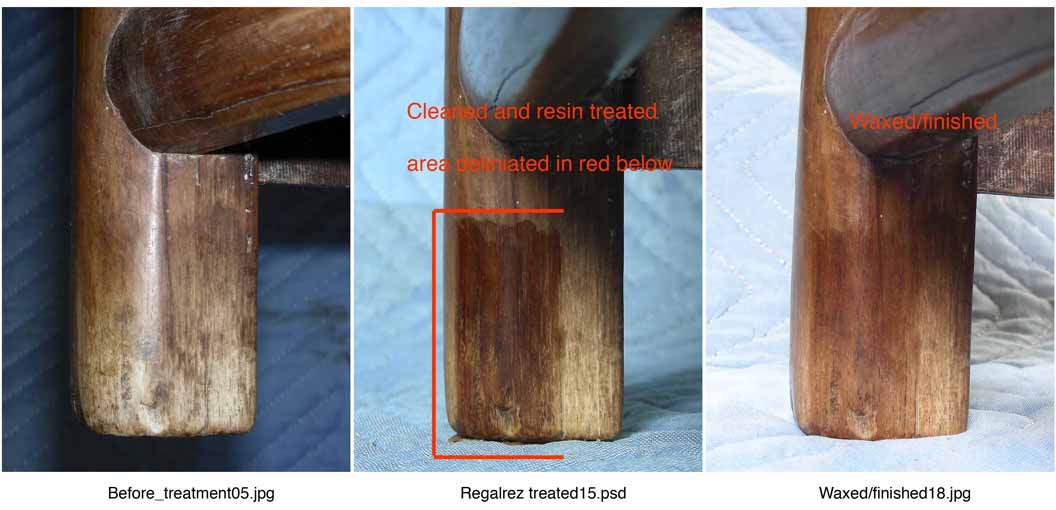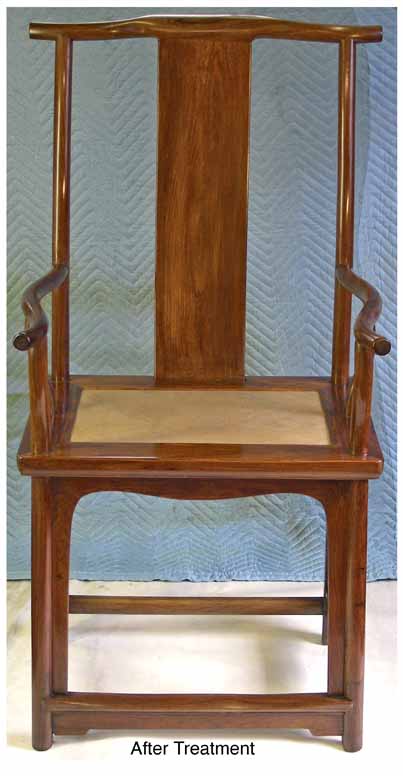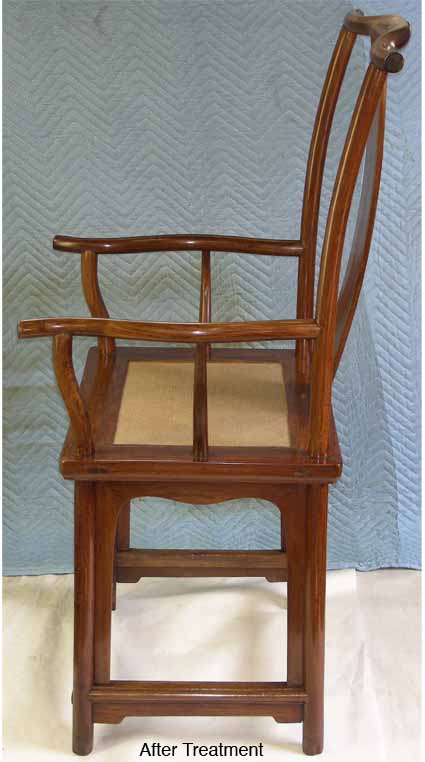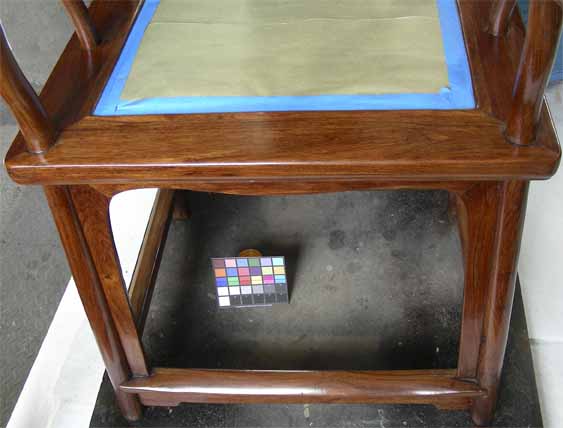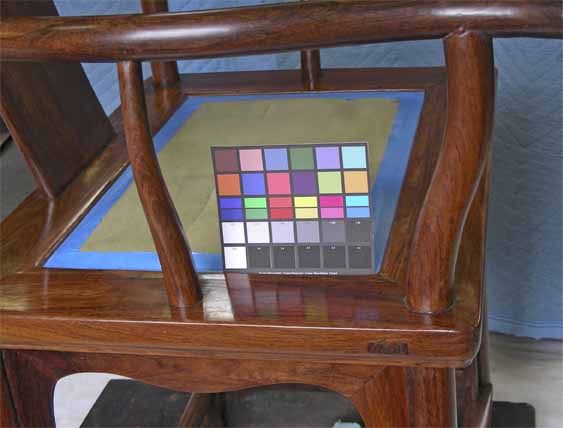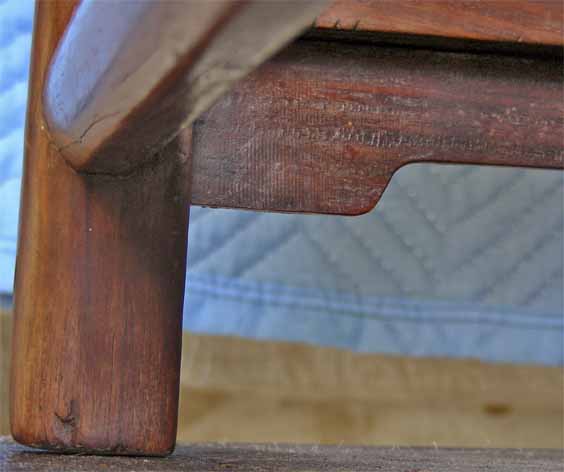|
Chinese Official’s Hat style Armchair Honolulu Museum of Art
|
|
Description: Ming dynasty huanghuali wood armchair with four protruding ends. Approximate dimensions are: H = 117 cm., (seat) 58.5 cm. W x 43 cm. Woven seat over lacquered (underside of seat) panel(s). Chair is one of pair. Measuring approximately: 28 ¾” H x 18 ½” W x 10 7/8” Deep Area of concern: As originally examined in the Academy basement storeroom; water staining (blanching) of wax finish overall; most notably at feet. Some paint transfers at proper right end of top rail and light soiling overall. Initially it was assumed that the “finish” on armchair consisted primarily of a substantial build of paste wax with the possibility of a clear resin coat[1] on some areas beneath.
Comments: In order to determine a cleaning strategy, testing was performed on the bottoms of the inside back of the front right leg and inside back of left rear leg. These areas were chosen due to the severe discoloration/blanching observed. This type of damage is consistent with the effect of water being absorbed through the end-grain of the feet whereby expansion occurs causing cleavage/rupture of the finish film and separation of the finish from the wood. The lighter color results from double refraction between the wood and the finish layers. When this happens with a wax finish, reestablishing an intact cohesive film is relatively simply performed by use of solvents/heat and additional paste wax. What was discovered is that a clear coat had been applied to the chair overall, and the wax is over it. Treatment[2]: Seat masked off, all surfaces vacuum cleaned and all top/finished surfaces cleaned with mineral spirits/hexane. A second brief cleaning was done with a water-dampened cloth. Resaturation of the finish with Regalrez® 1126[3] and subsequent re-waxing was successful and photographs of the areas show the effects[4]. Test areas were cleaned and re-waxed, but the blanched appearance reappeared as the wax dried. Wax was removed with solvents. Attempts to soften and dissolve the clear coat with the hope that it would re-bond to the wood were generally unsuccessful; film partially softened but also began to further separate from the wood. |
|
|
|
Conservation of Historic Furniture & Objects |
